python使用ARIMA进行时间序列的预测(基础教程)
时间序列就是以时间为索引的数据,比如下面这种形式python使用ARIMA建模,主要是使用statsmodels库首先是建模流程,如果不是太明白不用担心,下面会详细的介绍这些过程
时间序列就是以时间为索引的数据,比如下面这种形式
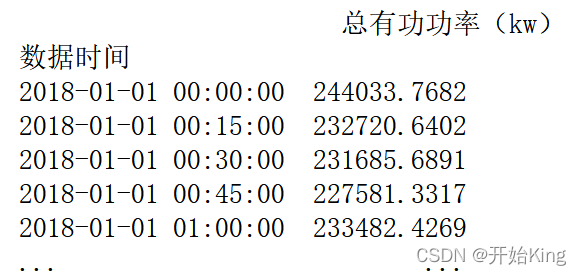 数据链接:https://pan.baidu.com/s/1KHmCbk9ygIeRHn97oeZVMg
数据链接:https://pan.baidu.com/s/1KHmCbk9ygIeRHn97oeZVMg
提取码:s0k5
python使用ARIMA建模,主要是使用statsmodels库
首先是建模流程,如果不是太明白不用担心,下面会详细的介绍这些过程
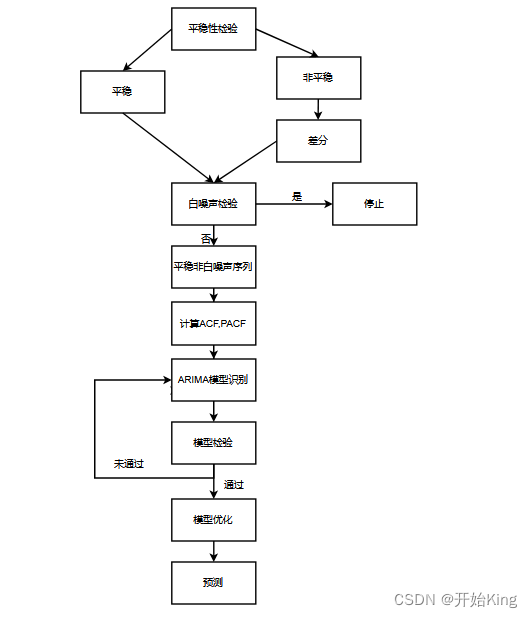
首先要注意一点,ARIMA适用于短期 单变量预测,长期的预测值都会用均值填充,后面你会看到这种情况。
首先导入需要的包
import pandas as pd
import numpy as np
import matplotlib.pyplot as plt
import statsmodels.api as sm
from statsmodels.stats.diagnostic import acorr_ljungbox
from statsmodels.graphics.tsaplots import plot_pacf,plot_acf
载入数据
df=pd.read_csv('./附件1-区域15分钟负荷数据.csv',parse_dates=['数据时间'])
df.info()
将默认索引改为时间索引
data=df.copy()
data=data.set_index('数据时间')
1 绘制时序图
plt.plot(data.index,data['总有功功率(kw)'].values)
plt.show()
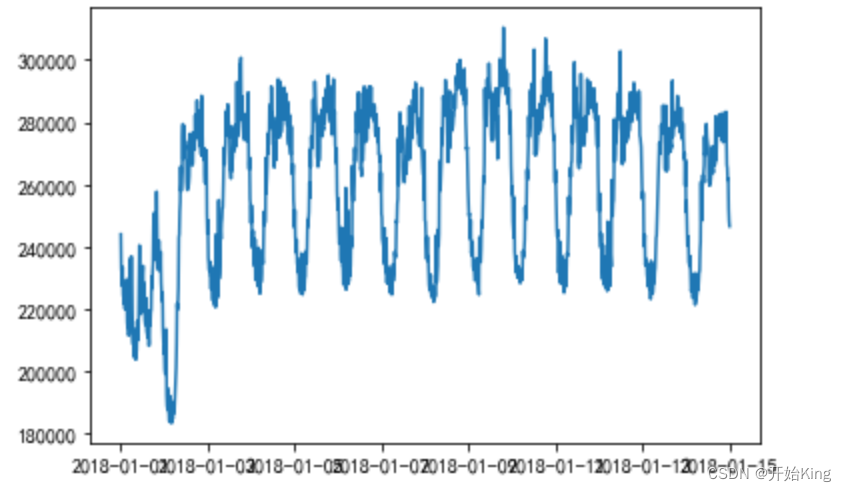 划分训练集和测试集
划分训练集和测试集
train=data.loc[:'2018/1/13 23:45:00',:]
test=data.loc['2018/1/14 0:00:00':,:]
2 平稳性检验
# 单位根检验-ADF检验
print(sm.tsa.stattools.adfuller(train['总有功功率(kw)']))
 1%、%5、%10不同程度拒绝原假设的统计值和ADF比较,ADF同时小于1%、5%、10%即说明非常好地拒绝该假设,本数据中,adf结果为-5.22, 小于三个level的统计值,说明数据是平稳的
1%、%5、%10不同程度拒绝原假设的统计值和ADF比较,ADF同时小于1%、5%、10%即说明非常好地拒绝该假设,本数据中,adf结果为-5.22, 小于三个level的统计值,说明数据是平稳的
3 白噪声检验
使用
Q
B
P
Q_{BP}
QBP 和
Q
L
B
Q_{LB}
QLB 统计量进行序列的随机性检验
# 白噪声检验
acorr_ljungbox(train['总有功功率(kw)'], lags = [6, 12],boxpierce=True)
 各阶延迟下LB和BP统计量的P值都小于显著水平(
α
=
0.05
\alpha=0.05
α=0.05),所以拒绝序列为纯随机序列的原假设,认为该序列为非白噪声序列
各阶延迟下LB和BP统计量的P值都小于显著水平(
α
=
0.05
\alpha=0.05
α=0.05),所以拒绝序列为纯随机序列的原假设,认为该序列为非白噪声序列
4 计算ACF,PACF
# 计算ACF
acf=plot_acf(train['总有功功率(kw)'])
plt.title("总有功功率的自相关图")
plt.show()
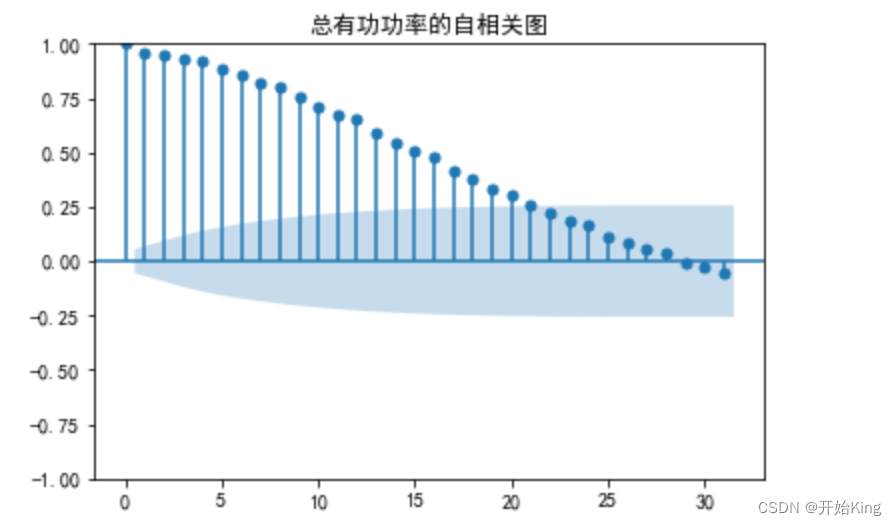
# PACF
pacf=plot_pacf(train['总有功功率(kw)'])
plt.title("总有功功率的偏自相关图")
plt.show()
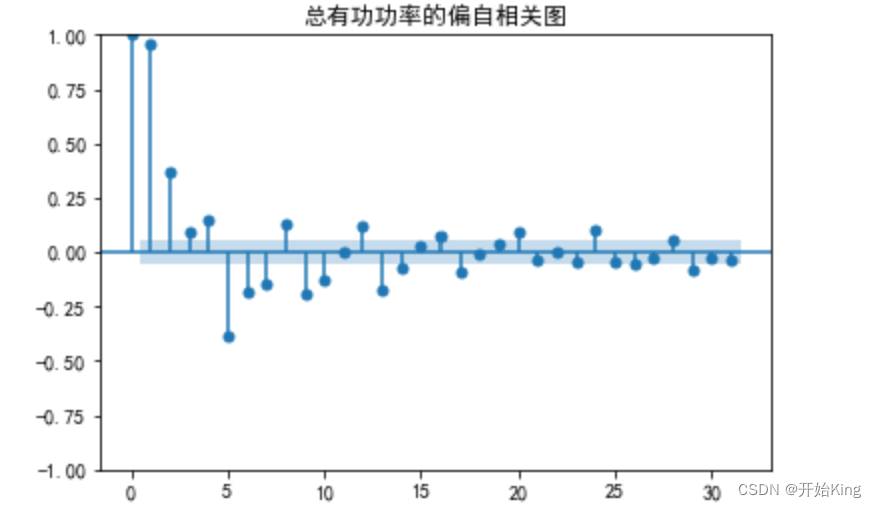
5 选择合适的模型进行拟合
| ACF | PACF | 模型 |
|---|---|---|
| 拖尾 | 截尾 | AR |
| 截尾 | 拖尾 | MA |
| 拖尾 | 拖尾 | ARMA |
如果说自相关图拖尾,并且偏自相关图在p阶截尾时,此模型应该为AR(p )。
如果说自相关图在q阶截尾并且偏自相关图拖尾时,此模型应该为MA(q)。
如果说自相关图和偏自相关图均显示为拖尾,那么可结合ACF图中最显著的阶数作为q值,选择PACF中最显著的阶数作为p值,最终建立ARMA(p,q)模型。
从ACF和PACF图的结果来看,p=7,q=4
model = sm.tsa.arima.ARIMA(train,order=(7,0,4))
arima_res=model.fit()
arima_res.summary()
因为看自相关图和偏自相关图有很大的主观性,因此,可以通过AIC或BIC来确定最合适的阶数
trend_evaluate = sm.tsa.arma_order_select_ic(train, ic=['aic', 'bic'], trend='n', max_ar=20,
max_ma=5)
print('train AIC', trend_evaluate.aic_min_order)
print('train BIC', trend_evaluate.bic_min_order)

6 模型预测
predict=arima_res.predict("2018/1/14 0:00:00","2018/1/14 23:45:00")
plt.plot(test.index,test['总有功功率(kw)'])
plt.plot(test.index,predict)
plt.legend(['y_true','y_pred'])
plt.show()
print(len(predict))
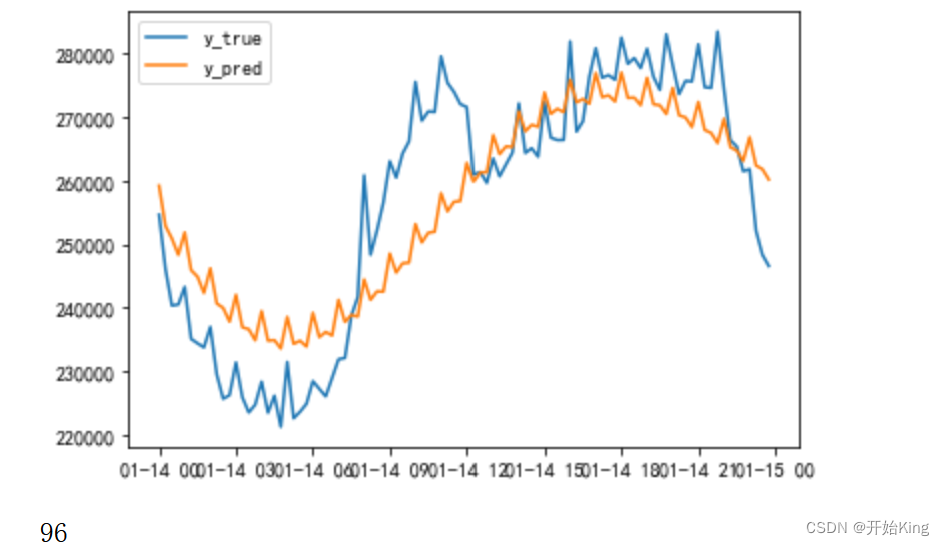
7 模型评价
from sklearn.metrics import r2_score,mean_absolute_error
mean_absolute_error(test['总有功功率(kw)'],predict)

8 残差分析
res=test['总有功功率(kw)']-predict
residual=list(res)
plt.plot(residual)
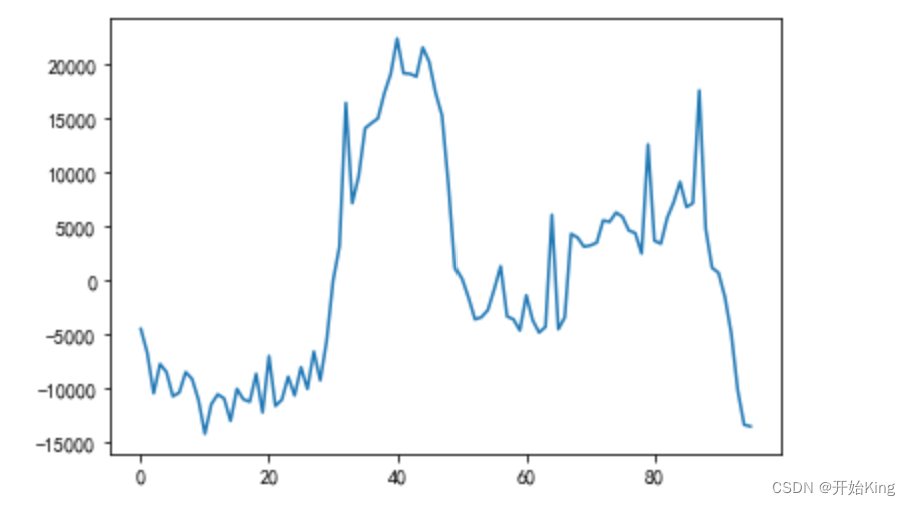
查看残差的均值是否在0附近
np.mean(residual)

残差正态性检验
import seaborn as sns
from scipy import stats
plt.figure(figsize=(10,5))
ax=plt.subplot(1,2,1)
sns.distplot(residual,fit=stats.norm)
ax=plt.subplot(1,2,2)
res=stats.probplot(residual,plot=plt)
plt.show()

在开头说过,ARIMA不适用长期预测,下面把预测范围调大,看看是否和文章开头所说的一致
predict=arima_res.predict("2018/1/14 0:00:00","2018/1/18 23:45:00")
plt.plot(range(len(predict)),predict)
plt.legend(['y_true','y_pred'])
plt.show()
print(len(predict))
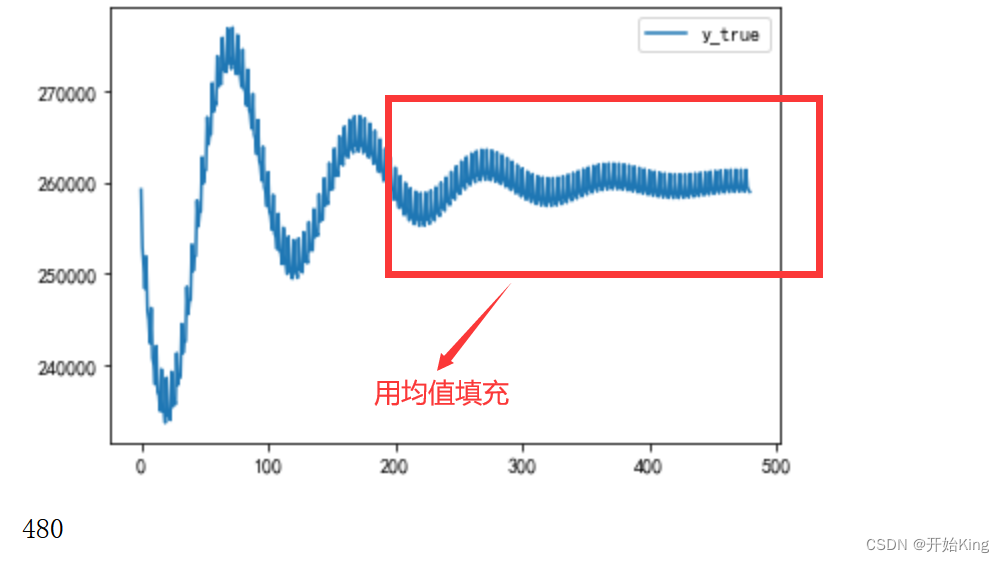
更多推荐
 已为社区贡献6条内容
已为社区贡献6条内容









所有评论(0)